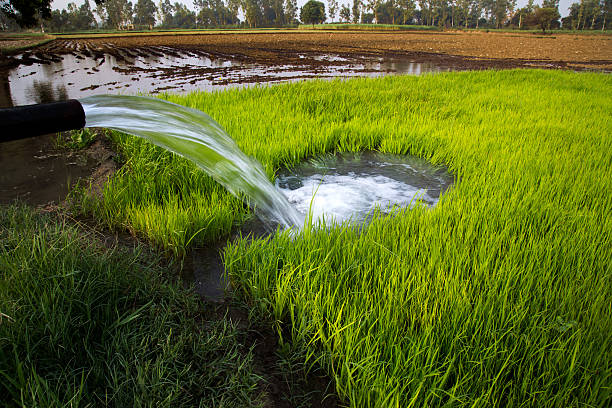Food security is a major concern with the increase in world population. The current world population stands at approximately 7.9 billion people and sustainable farming is the solution we required.
To achieve this, adopting technologies for sustainable farming systems in 2023 is a must. This will enable farmers to increase their yield while reducing their costs. This article will explore the various ways technology can be adopted to ensure a sustainable farming system in 2023.
Why Do We Need To Adopt Technology in the Farming System
With the rapid increase in world population, humans are desperately searching for more sustainable ways to provide food to ensure the population's survival. According to the United Nations, the global world population is expected to reach 98 billion by 2050.
If those projections become our reality, it's clear that we need to improve global food production. The food security risk in developed countries like America, Britain, France, Germany, etc., isn't that high compared to most African countries.
To ensure food security on a global scale, we need to employ technological advancements to improve our farming system.
Examples of Technologies that Can Be Adopted for Sustainable Farming System in 2023
Adopting modern technologies to our farming system is one sure way to ensure global food security, particularly innovative food and energy. However, what kind of innovations or technological advancements are we expected to employ?
In old times, even now, humans practiced farming using primitive tools like hoe, cutlass, shovel, etc. These tools are obsolete but still got the job done at that time; however, if we want to improve our food output and ensure food security, here are a few technologies that we can adopt:
Cloud Computing
Believe it or not, the future of food production is closely tied to Cloud Computing. With the vast amounts of data processed by farmers, scientists, manufacturers, etc., it's easier to imagine the agriculture industry functioning by adopting cloud computing shortly.
Adopting cloud computing in agriculture would give agribusinesses the liberty to effectively manage multiple technology solutions and other business intelligence tools in a single platform.
Satellite Data
The use of Satellite Data is proliferating. Industries worldwide are adopting this technology as it is very efficient and cost-effective.
A fully functioning satellite can provide higher resolution images of your farm and the most minute detail and information about each pixel, reducing dependence on expensive sensors.
With satellites, farmers could access information like atmospheric pressure, soil temperature, soil nutrients, etc.
Drones and Robots
It's not news that robots are allowed access to the central vaults housing most of the stored gold in the US Federal Reserve. This proves the security and efficiency of robots and automated machines.
Repetitive tasks like plant watering, mulching, plowing, etc., can be easily handled by well-developed robots. However, many people have expressed concerns about the number of jobs at risk if we went fully automated; robots remain a handy tool in developing a sustainable farming system.
Renewable Energy
To attain a sustainable farming system, the reliance on fossil fuels must be significantly reduced. Applying renewable energy sources like wind, solar, hydro, etc., is one sure path to developing a sustainable farming system.
A fossil-independent food industry will help create a healthier, more productive, and more sustainable farming system that can provide food security for all.

Image Source
Advantages of Adopting Technology for Sustainable Farming in 2023
1. Cost Effective
One of the significant benefits of adopting technology for a sustainable farming system is cost-effectiveness. Before advancing technology, you'd need a large workforce to help cultivate a particular crop. You'll have to provide the crew with some form of compensation.
However, due to the various advancements in agri-tech, you can channel your finances towards purchasing automated tools, machines, etc., that don't require payment in the long run.
2. Improves Food Security
With the rate at which the population is growing, food security can only be ensured by adopting technology in the agricultural sector. Seasonal food products can be produced all year round with the adoption of technology; this would help improve global food security.
3. Protects our Environment
The dangers of Carbon emissions cannot be overemphasized; to help protect our planet, Carbon emissions need to be drastically reduced. One sure way of achieving Carbon net zero is to employ technology in our agricultural sector.

Image Source
4. Saves Time and Labour
Employing technologies like Artificial Intelligence, machine learning, robots, and drones can significantly cut the time used to complete a farm task. For example, there are robots designed specifically for irrigation.
With the proper configuration, they'll be able to thoroughly rinse the farm without needing human input and will do so at a much faster pace.

Image Source
Disadvantages of Adopting Technology for Sustainable Farming in 2023
1. Resistance by Traditional Farmers
Traditional farmers used to farm with tools like hoe, sickle, cutlass, etc., would find it hard to adopt technological advancements. They would be naturally skeptical because such tools and devices are entirely new; it'd take considerable time to gain acceptance by such farmers.
2. Lack of Technical Know-how
One downside of technological adoption is that rural farmers often lack the technical know-how to operate such equipment. It becomes even more complex when the farmer isn't particularly literate.
Even if they're willing to accept the technology, the lack of knowledge could prevent them from ever taking technological advancements in farming.
Conclusion
Food security is the only way to guarantee the survival of a population. If we don't proffer and adopt better and more efficient farming techniques and technologies, we might find ourselves in a race for survival.
In this article, we've only skimmed the surface of the world of technological advancements in farming; there's still more to explore. We hope you'll be more intrigued and join the mission to develop a sustainable farming system by the time you finish this article.
Author bio:
I am Jessica Smith. I am a freelance content writer and cover various niches.



